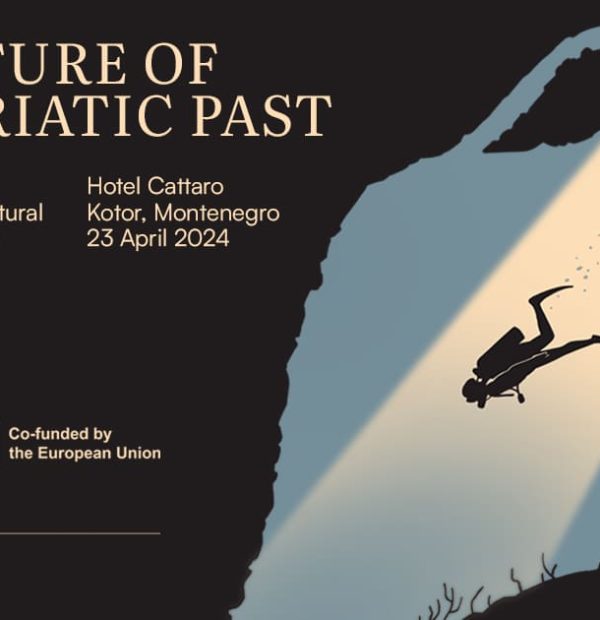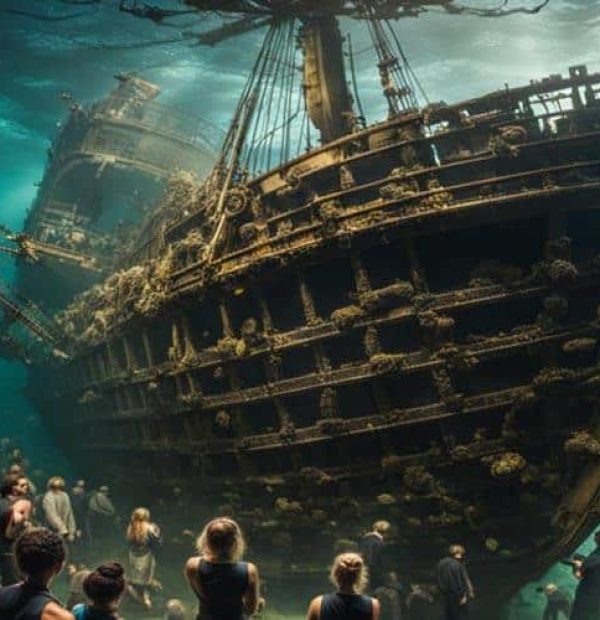Thursday, 16 May 2024
Menu

A new corona virus known as SARS-CoV-2, is the cause of COVID-19 disease, which has killed nearly 220000 people worldwide to date (April 29, 2020). SARS-CoV-2 is part of a viral group known as “corona”(Latin: corona) because of the appearance of the proteins that contact its surface.
The virus is spread in humans by droplets transmitted by inhalation (coughing, sneezing, talking) and by touching contaminated surfaces. The incubation period of the virus ranges from 2 to 14 days, with an average of about five days. Experts believe that the vaccine for COVID-19 will not be widely available in Poland for about two more years.
Until a vaccine is available or effective treatments are found, the disease will continue to spread and many of the existing restrictions will enter the canon of everyday life.
Preventive methods such as maintaining social distance, isolation, minimising activity and opportunities for contagion will effectively contribute to the so-called ‘flattening of the curve’ of the increase in the incidence of the disease, which helps to protect people and keeps our medical care from becoming completely overwhelmed and paralysed. Such measures unfortunately also have a huge and not yet fully known economic impact on society and our economy. However, there is little doubt that the economic impact will also affect the diving industry.
Restrictions on person-to-person contact, congregations or being among people have brought about changes throughout our industry. Training agencies make their materials and courses available online for free or for a small fee, just to keep, as the Americans say, the money rolling in.
What can we do as divers? It’s probably not easy in this time of global economic crisis and diving will go off the forefront for a while, at least for those people whose financial situation becomes less stable. What can we do as a diving community? It is certainly not worth giving up and giving up on diving. Thanks to the fact that many of us spend a lot of time in front of the computer, a lot of interesting and valuable material has appeared online. There are webinars, online courses and a lot of interesting articles published. So this is an opportunity to consolidate and broaden our theoretical knowledge and make up for gaps in education. An effective form of support for the most endangered dive centres, i.e. those not located directly at dive sites, will be the review, service and purchase of additional diving equipment. If possible, do not cancel trips, but reschedule them for a later date. Start your courses and carry out theoretical lessons – there is more time for this now, which should be used so that the theory of specific topics is appropriately deepened and discussed more widely than just the syllabus of the training course. For people who so far have only dived in warm exotic waters, the closure of borders and the impediments to travel and the risk of infection, may be an argument to try diving in our home waters. I know it will be hard for someone who has never tried it to believe, but there are lakes or quarries in Poland that are worth diving in. The Baltic Sea can be a friendly and beautiful body of water, where not only “something” can be seen, but also there is a rich life and beautiful wrecks. Look for guides or instructors who conduct such dives. Let them take you underwater much closer to home. This will also help support local tourism and the domestic diving market.
Cleaning equipment will never be the same again. Simply rinsing with water after each pool session will probably no longer be enough. Every piece of equipment that is shared between divers, especially automatics, jackets, masks or wetsuits, will require special disinfection. The DAN has published special guidelines concerning the disinfection and cleaning of diving equipment.
Coronaviruses belong to the group of enveloped viruses, which means that the form the virus takes outside the cell of an infected person is protected by a special envelope (wall) made up of lipids (fats). As with most enveloped viruses, damage or destruction of this barrier will destroy or inactivate the virus. Studies of other coronaviruses have shown that the infectivity and therefore the efficacy of the virus can be reduced by heat, UV radiation and alkaline or acidic conditions.
This means that adequate disinfection will effectively protect us from the virus. Surfaces can be disinfected with household cleaners, alcohol or specialist medical substances and disinfectants. As research on SARS-CoV-2 is ongoing, it is not clear how long the virus can survive on different surfaces. Recent studies have shown that it remains active for up to 3 hours in an aerosol droplet (e.g. from sneezing). Such droplets can remain airborne for several hours. Up to 4 hours on copper surfaces, up to 24 hours on cardboard and 2 to 3 days on plastic and stainless steel. I have not been able to find information on neoprene, for example, so the most pessimistic option would have to be taken. It is also unclear how long the virus is able to survive in or on water. Studies on the SARS virus, called SARS-CoV-1, which are generally much more difficult to kill, showed that the virus remained active for a long time on the surface of water such as lakes, rivers, wetlands, etc. (this was, in fact, the cause of the epidemic). (this was, in fact, the cause of the 2003 outbreak). Positive information concerned chlorinated or brominated waters, such as swimming pools and hot tubs, the CDC (Centre for Control and Prevention of Communicable Diseases) described SARS-CoV-2 as non-infectious in such environments. It will probably have to be some time before such regulations bring swimming pools and whirlpools back into operation, but it will already be a small step forward in bringing back the diving industry.
There is still little data on SARS-CoV-2. Many of the theories that circulate online and in the media are based on studies of other coronaviruses, including, for example, SARS-CoV-1. This virus has been found to lose its infectious capacity when heated and maintained for a minimum of 15 minutes at 56°C. The World Health Organization determines that the SARS-CoV-1 virus remains stable at temperatures between 4°C and 37°C and will only lose its infectious capacity after 30 minutes at 56°C. Divers Alert Network has received questions about the virus entering a diving cylinder as a result of contaminated air being drawn into the compressor. During the compression process, air in a compressor with four compression stages, with an inlet pressure of 1ATA and an outside air temperature of 26°C, compressing the air to 270ATA will heat the gas between the compression stages to a temperature in excess of 100°C. This indicates the instantaneous temperature when the highest pressure is reached. In reality, the temperatures at the outlet valves, thanks to the cooling systems and the usually lower gas temperature in our conditions, are likely to be between 70°C and 90°C at the start. We could assume that the gas temperature occurring at each compression stage will be around 65°C. As this is clearly sufficient temperature to kill SARSCoV-2, it is therefore unlikely that COVID-19 will survive the process. The virus-carrying droplets themselves exhaled by humans can be up to 0.5 microns in size, so are far too small to be stopped by the flit system, but the virus should be inactive at the filling stage of the cylinder itself.
However, it is worth noting that a virus transmitted by contact with the surface of, for example, a cylinder filling hose, cylinder valve, o-ring or vending machine, could theoretically enter the cylinder in this way. Studies conducted on various viruses (not only enveloped viruses) have shown that some viruses are extremely resistant to high hydrostatic pressures. It must therefore be assumed that SARS-CoV-2 is able to survive in pressurised conditions such as those in which compressed diving gases are stored. All procedures relating to hand washing and disinfection of surfaces with which contact may contribute to the spread of infection and the use of appropriate barriers and protective measures, such as disposable gloves, should therefore be maintained.
There are many methods and agents with which diving equipment can and should be disinfected. Please note that some agents such as a solution of commonly available bleach can be extremely effective in disinfecting and inactivating the virus. However, it is worth noting that these are very strong chemicals and can very often damage diving equipment and endanger life and health. The handling of strong chemicals should always be observed and surfaces washed with them should be thoroughly rinsed and dried. Such chemicals can be harmful to the skin and very dangerous if they get into the eyes, mouth or oesophagus or lungs.
Washing hands and surfaces with soap and water is one of the most effective ways to protect against the virus. The type of soap used is not important. Washing with soap and water does not kill microorganisms, but physically removes them from surfaces. Simply rinsing under running water may be effective at removing unwanted material from the surface, but soap will physically clump and pull the material off the skin and into the water. The Divers Alert Network was asked why soap and water would not work for diving equipment if it is an effective method when disinfecting hands. Soap and water, as mentioned above, must be combined with mechanical action to be completely effective. Soaking diving equipment in soapy water alone will not be an effective method of disinfection. A combination of soapy water and mechanical action, such as wrestling, could theoretically prove more effective. However, there are parts of diving equipment that cannot be easily reached without taking them apart, e.g. the inside of an automaton. Therefore, using appropriate disinfectants to clean diving equipment will be more effective. Many of these agents exist in the medical and laboratory industry. Some of them, such as Virkon, have been used successfully for disinfection by CCR divers for years. Here it is available list of products confirmed as effective agents against SARSCoV-2. However, it is worth checking what effect their use may have on diving equipment. The US EPA has prepared a list of agents that are effective against coronavirus and are also approved for use with diving equipment. Another option is to use agents that are known to be effective against SARSCoV-1 viruses, as these are commonly much harder to kill than the current SARSCoV-2. As an alternative, we can follow the CDC recommendations and use a bleach solution (sodium hypochlorite) at a ratio of 1 glass per 4l of water.
Once equipment has been disinfected, care should be taken not to re-infect it, e.g. during storage. Dive centre staff should take care to maintain good hygiene, frequent hand washing and regular disinfection. When using any disinfectant, follow the manufacturer’s instructions. Then rinse equipment thoroughly and dry well before use.
Many divers and instructors are considering the safety of diving and training in the COVID-19 era, and it is the air sharing procedure that keeps everyone awake at night. Some diving federations assume, in the absence of gas, the procedure of handing over the basic breathing apparatus to the partner without gas. Which in this day and age poses a definite risk of contagion. RAID has already made changes in its training procedures on how to carry out this exercise without risking contagion. This requires little modification, but could lead to some problems in a real emergency. Other training federations are considering similar solutions. A solution, at least in part, may be the introduction of regulations concerning full duplication of breathing systems, i.e. the use of independent sets, which in the long run will certainly contribute to increased safety of diving. For recreational divers, a solution may be the use of two-cylinder sets, such as twinset or sidemount, or the use of stage side cylinders. Technical and CCR divers will need to increase the amount of gas they take and change their dive planning so that their partner’s gas is not included in their gas reserve planning. However, it is important to remember that even the most malignant form of COVID-19 is far less dangerous than not being able to breathe underwater.
If we choose to do so, it is another reason to support our local dive centres by buying additional equipment and training to adapt to the new safer reality in this case.
We are in a new reality. It is probably necessary to come to terms with the fact (as difficult as it may be) that things will no longer be as they were before. We do not yet fully know the effects that COVID-19 disease has on divers’ bodies and whether it is possible, and to what extent, for them to continue practicing the sport. At the moment there are relatively few studies on the subject and we have little data, and those that are, are not promising. Above all, we need to make sure that our sport is safe. This means making sure we are all safe, certified divers, students and staff. We will probably have to introduce a lot of new procedures regarding disinfection, hygiene, maintaining social distance in dive centres and on boats, as well as maintaining and following hygiene rules. New training procedures will be introduced as well as many rules that we are probably not yet aware of. Diving will change and certainly many people around the world will no longer be able to return to diving as it was before the pandemic. Like any change maybe this one will bring positive aspects, related to e.g. better access to knowledge and training via the internet? Or increasing diver safety by placing more emphasis on self-reliance and self-sufficiency, both in equipment and diver fitness. Perhaps, too, under the influence of a pandemic, we can make changes that could not otherwise be made? Changes that will give the underwater world a break from the tourist traffic and allow us to introduce new regulations that will take into account a better preservation of nature and aquatic life.
Dive safely and stay healthy.
Sources:
Diving with COVID-19 – by Dr. Doug Ebersole
Disinfection of Scuba Equipment and COVID-19
Coronavirus (COVID-19)
Biocidal Products
New Advice Cautions Against Rushed Return to Diving for Coronavirus Patients
COVID-19 LUNG EFFECTS WORRY DIVING DOC
Coronavirus Cases
Travel and Diving Safety Tips During and After COVID-19










Welcome to DIVERS24.COM, your daily source of scuba news, freediving, scuba diving information, and equipment reviews. Our comprehensive coverage of the dive industry from A to Z provides you with all the latest scuba news, training updates, underwater photography tips, and everything else related to scuba diving. Whether you’re a beginner or an experienced diver looking for more knowledge about scuba gear or techniques – we’ve got it covered! With our in-depth articles written by experienced divers who have been there and done that, you are sure to find exactly what you need here at Divers24.com. Dive into scuba news today!
Underwater Media Sp. z o.o.
Szafarnia 11/F8,
80-755 Gdansk, Poland
Welcome to DIVERS24.COM, your daily source of scuba news, freediving, and scuba diving information. Sign in for a weekly news update and discount coupons for dive gear and apparel.
@2023 - underwatermedia.pl. All Right Reserved. Designed and Developed by Tworzenie stron internetowych Gdansk

The Divers24 portal is currently the largest online medium treating diving in Poland. Since 2010 we have been providing interesting and important information from Poland and around the world on all forms of diving and related activities.
Contact us: info@divers24.com